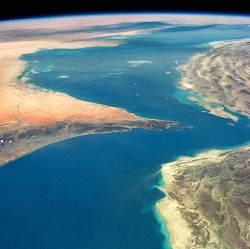
Attempting to locate and assist people living in impoverished parts of the world could be made easier by using satellite imagery and machine learning algorithms, according to a new study led by researchers at Stanford University and published in the journal Science.
Traditionally, international aid group perform door-to-door surveys to record data on local incomes in developing nations, but as study author Marshall Burke of the Stanford Institute for Economic Policy Research explained, these methods can be expensive and time consuming. They believe they’ve found a more efficient alternative.
What they did is develop a machine learning algorithm using a computer system to search through millions of satellite images, pinpointing signs of poverty such as poor nighttime lighting and poorly-maintained roads in five African countries (Tanzania, Uganda, Malawi, Nigeria, and Rwanda).
“If you give a computer enough data it can figure out what to look for. We trained a computer model to find things in imagery that are predictive of poverty,” Burke told BBC News. “It finds things like roads, like urban areas, like farmland… [and] it finds patterns in imagery that to you or I don’t really look like anything… but it’s something the computer has figured out is predictive of where poor people are.”
As the Stanford team explained in a statement, when they began their research, they wanted to see if readily-available high-resolution satellite imagery could be used to identify regions where impoverished people lived. The problem was coming up with a deep-learning algorithm capable of performing such an analysis, given the lack of available data to work with.
“There are few places in the world where we can tell the computer with certainty whether the people living there are rich or poor,” said lead author Neal Jean, a doctoral student in computer science at the Stanford School of Engineering. “This makes it hard to extract useful information from the huge amount of daytime satellite imagery that’s available.”
Since more developed regions tend to be more well-lit at night, they used a combination of both daytime and nighttime images of the Earth’s surface. The nighttime data was used to identify and evaluate different features in the daytime images, including roads, farmland and locations where urban develop was more prevalent, and used this data to predict village-level wealth.
Comparing the algorithm’s findings to available survey data, they found that the computers were effective at predicting the distribution of poverty, and the researchers are confident that their new technique could help aid providers and governments better distribute their funds more efficiently while also eliminating the need for more costly door-to-door survey identification programs.
“Our paper demonstrates the power of machine learning in this context,” said study co-author Stefano Ermon, an assistant professor of computer science and as well as a fellow by courtesy at the Stanford Woods Institute. “And since it’s cheap and scalable, requiring only satellite images, it could be used to map poverty around the world in a very low-cost way.”
